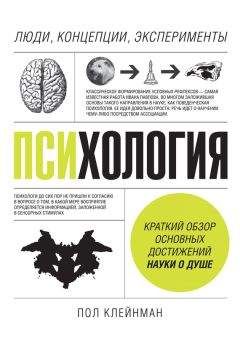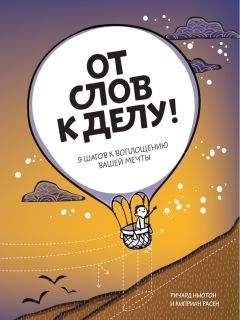Мэг Джей - Сверхнормальные. Истории, которые делают нас сильнее
Вы, конечно, помните, что, когда миндалевидное тело обнаруживает в окружающей среде угрозу, оно приводит организм в состояние готовности, точнее говоря, «готовности вести себя должным образом»[137]. Однако что значит «должным образом», зависит от ситуации. Мы можем подготовиться к бою, а можем быть готовы пуститься наутек. Но, поскольку взрослые обычно превосходят детей по размерам, силе и скорости, выбор в ситуации «бей или беги» может восприниматься последними как отсутствующие в их распоряжении варианты. В результате дети встречают угрозу беспомощными и уязвимыми, и в этом случае их мозг решает, что лучше всего вести себя[138] как ни в чем не бывало, не делая, так сказать, резких движений. Просто плыть по течению, чтобы и ситуация плыла по течению. Оставаться спокойным во всех отношениях.
Если амигдала, по словам Леду, это «втулка в колесе страха»[139], то часть мозга, называемая полем Брока, – это втулка в колесе речи. То, что мы видим, слышим и чувствуем, она превращает в слова[140], а затем подает моторной области коры головного мозга сигнал их продуцировать. Так вот, как показывают исследования человеческого мозга, у некоторых людей при резком повышении активности в миндалевидном теле снижается активность поля Брока[141]. Иначе говоря, столкнувшись с чем-то страшным, амигдала резко активируется, а поле Брока, наоборот, успокаивается, а сам человек немеет. По всей вероятности, потеря дара речи от ужаса происходит на неврологической почве; и, несомненно, у нас есть все основания говорить об адаптивной ценности того, что в случае опасности человек старается обращать на себя как можно меньше внимания, вместо того чтобы кричать. Ведь в результате такого поведения охотящийся за тобой лев узнает, что ты прячешься в кустах. Очевидно, по этой причине один из мальчиков, который в тот день был в школьном автобусе из Чоучиллы, позже признался, что ему просто «было слишком страшно, чтобы плакать»[142].
Конец ознакомительного фрагмента.
Текст предоставлен ООО «ЛитРес».
Прочитайте эту книгу целиком, купив полную легальную версию на ЛитРес.
Безопасно оплатить книгу можно банковской картой Visa, MasterCard, Maestro, со счета мобильного телефона, с платежного терминала, в салоне МТС или Связной, через PayPal, WebMoney, Яндекс.Деньги, QIWI Кошелек, бонусными картами или другим удобным Вам способом.
Примечания
1
Псевдоним Белл Хукс Глория взяла в честь бабушки, но писала его с маленькой буквы. Прим. пер.
2
Talking Back: Thinking Feminist, Thinking Black (Boston: South End Press, 1999), 9.
3
Автор цитаты точно неизвестен, обычно эти слова приписывают Майе Энджелоу.
4
Американская писательница, поэтесса и мотивационный оратор. Прим. ред.
5
American Psychological Association, «The Road to Resilience», по состоянию на 29 августа, 2016, http://www.apa.org/helpcenter/road-resilience.aspx; см. также Suniya S. Luthar and Dante Cicchetti, «The Construct of Resilience: Implications for Interventions and Social Policies», Development and Psychopathology 12, no. 4 (2000): 857–885; Ann S. Masten, «Resilience in Children Threatened by Extreme Adversity: Frameworks for Research, Practice, and Translational Synergy», Development and Psychopathology 23, no. 2 (2011): 493–506; Ann S. Masten and Jenifer L. Powell, «A Resilience Framework for Research, Policy, and Practice», in Resilience and Vulnerability: Adaptation in the Context of Childhood Adversities, ed. Suniya S. Luthar (New York: Cambridge University Press, 2003), 1–25; Jennifer R. Riley and Ann S. Masten, «Resilience in Context», in Resilience in Children, Families, and Communities: Linking Context to Practice and Policy, eds. Ray D. Peters, Bonnie Leadbeater, and Robert J. McMahon (New York: Springer, 2005), 13–25.
6
Dante Cicchetti and Jennifer A. Blender, «A Multiple-Levels-of-Analysis Perspective on Resilience», Annals of the New York Academy of Sciences 1094, no. 1 (2006): 248–258.
7
Margaret O’Dougherty Wright, Ann S. Masten, and Angela J. Narayan, «Resilience Processes in Development: Four Waves of Research on Positive Adaptations in the Context of Adversity», in Handbook of Resilience in Children, eds. Sam Goldstein and Robert B. Brooks (New York: Springer, 2012), 19.
8
Определения психологической устойчивости взяты из Free Dictionary, по состоянию на 26 февраля 2017 года, http://www.freedictionary.com.
9
Dante Cicchetti and Jennifer A. Blender, «A Multiple-Levels-of-Analysis Perspective on Resilience», Annals of the New York Academy of Sciences 1094, no. 1 (2006): 248–258; Suniya S. Luthar, Dante Cicchetti, and Bronwyn Becker, «The Construct of Resilience: A Critical Evaluation and Guidelines for Future Work», Child Development 71, no. 3 (2000): 543–562; Suniya S. Luthar, Jeanette A. Sawyer, and Pamela J. Brown, «Conceptual Issues in Studies of Resilience: Past, Present, and Future Research», Annals of the New York Academy of Science 1094 (2006): 105–115.
10
Victor Goertzel and Mildred George Goertzel, Cradles of Eminence: A Provocative Study of the Childhoods of Over 400 Famous Twentieth-Century Men and Women (New York: Little, Brown, 1962); Victor Goertzel et al., Cradles of Eminence: Childhoods of More than Seven Hundred Famous Men and Women (Scottsdale, AZ: Great Potential Press, 2004).
11
Victor Goertzel and Mildred George Goertzel, Cradles of Eminence: A Provocative Study of the Childhoods of Over 400 Famous Twentieth-Century Men and Women (New York: Little, Brown, 1962); Victor Goertzel et al., Cradles of Eminence: Childhoods of More than Seven Hundred Famous Men and Women (Scottsdale, AZ: Great Potential Press, 2004).
12
Victor Goertzel et al., Cradles of Eminence: Childhoods of More than Seven Hundred Famous Men and Women (Scottsdale, AZ: Great Potential Press, 2004), 133.
13
Letters of Mrs. Adams: The Wife of John Adams (Boston: Wilkins, Carter, 1848), 111.
14
Josef Breuer and Sigmund Freud, Studies in Hysteria (Boston: Beacon Press, 1950).
15
Цит. по Anais Nin, In Favor of the Sensitive Man, and Other Essays (San Diego: Harcourt Brace, 1976), 14; эти слова также приписываются Фрейду и даже высечены на стене музея Фрейда в Вене.
16
Alexander Pope, Moral Essays, epis.i, line 149.
17
Norman Garmezy, «The Study of Competence in Children at Risk for Severe Psychopathology», in The Child in His Family. Vol. 3, Children at Psychiatric Risk, eds. Elwyn J. Anthony and PG. Koupernik (New York: Wiley, 1974), 77–97; Norman Garmezy, «Stress, Competence, and Development: Continuities in the Study of Schizophrenic Adults, Children Vulnerable to Psychopathology, and the Search for Stress-Resistant Children», American Journal of Orthopsychiatry 57, no. 2(1987): 159–174; Norman Garmezy, «Vulnerability Research and the Issue of Primary Prevention», American Journal of Orthopsychiatry 41, no. 1 (1971): 101–116; Ann S. Mastenand Auke Tellegen, «Resilience in Developmental Psychopathology: Contributions of the Project Competence Longitudinal Study», Development and Psychopathology 24, no. 2(2012): 345–361.
18
Michael Rutter, «Maternal Deprivation, 1972–1978: New Findings, New Concepts, New Approaches», Child Development 50, no. 2 (1979): 283–305; Michael Rutter, «Protective Factors in Children’s Responses to Stress and Disadvantage», Annals of the Academy of Medicine, Singapore 8, no. 3(1979): 324–338.
19
Emmy E. Werner and Ruth S. Smith, Vulnerable but Invincible: A Study of Resilient Children (New York: McGraw-Hill, 1982).
20
Lois B. Murphy and Alice E. Moriarty, Vulnerability, Coping and Growth from Infancy to Adolescence (Oxford, UK: Yale University Press, 1976).
21
Manfred Bleuler, The Schizophrenic Disorders: Long-Term Patient and Family Studies (New Haven, CT: Yale University Press, 1978).
22
Elwyn J. Anthony and Bertram J. Cohler, eds., The Invulnerable Child (New York: Guilford, 1987); see p. ix.
23
Norman Garmezy, «Vulnerability Research and the Issue of Primary Prevention», American Journal of Orthopsychiatry 41, no. 1 (1971): 101–116; see p. 114.
24
Stephen E. Buggie, «Superkids of the Ghetto», Contemporary Psychology 40, no. 12 (1995): 1164–1165; Carol Kauffman et al., «Superkids: Competent Children of Psychotic Mothers», American Journal of Psychiatry 136, no. 11 (1979): 1398–1402; Maya Pines, «Superkids», Psychology Today 12, no. 8 (1979): 53.
25
Elwyn J. Anthony, «The Syndrome of the Psychologically Invulnerable Child», in The Child in His Family. Vol. 3, Children at Psychiatric Risk, eds. Elwyn J. Anthony and PG. Koupernik (New York: Wiley, 1974), 529–544; Elwyn J. Anthony and Bertram J. Cohler, eds., The Invulnerable Child (New York: Guilford, 1987); Norman Garmezy, «Vulnerability Research and the Issue of Primary Prevention», American Journal of Orthopsychiatry 41, no. 1 (1971): 101–116; Maya Pines, «In Praise of ‘Invulnerables’», APA Monitor (December 1975), 7.
26
Emmy E. Werner and Ruth S. Smith, Vulnerable but Invincible: A Longitudinal Study of Resilient Children and Youth (New York: Adams, Bannister, Cox, 1982),
27
Elwyn J. Anthony, «A New Scientific Region to Explore», in The Child in His Family. Vol. 4, Vulnerable Children, eds. Elwyn J. Anthony and PG. Koupernik (New York: Wiley, 1978), 3–16.
28
Elwyn J. Anthony, «Risk, Vulnerability, and Resilience: An Overview», in The Invulnerable Child, eds. Elwyn J. Anthony and Bertram J. Cohler (New York: Guilford, 1987), 3–48; цит. по p. 41.
29
Julius Segal and Herbert PG. Yahraes, Child’s Journey (New York: McGraw-Hill, 1978), 297.
30
Резюме об этом якобы «коротком списке» см. Margaret O’Dougherty Wright, Ann S. Masten, and Angela J. Narayan, «Resilience Processes in Development: Four Waves of Research on Positive Adaptations in the Context of Adversity,” in Handbook of Resilience in Children, eds. Sam Goldstein and Robert B. Brooks(New York: Springer, 2012), 21; см. также Suniya S. Luthar, ed., Resilience and Vulnerability: Adaptation in the Context of Childhood Adversities (New York: Cambridge University Press, 2003); Suniya S. Luthar, «Resilience in Development: A Synthesis of Research Across Five Decades», in Developmental Psychopathology: Risk, Disorder, and Adaptation, vol. 3, 2nd ed., eds. Dante Cicchetti and Donald J. Cohen (Hoboken, NJ: Wiley, 2006), 739–795; Suniya S. Luthar, Dante Cicchetti, and Bronwyn Becker, «The Construct of Resilience: A Critical Evaluation and Guidelines for Future Work», Child Development 71, no. 3 (2000): 543–562; Ann S. Masten, «Ordinary Magic: Resilience Processes in Development», American Psychologist 56, no. 3 (2001): 227–238; Ann S. Masten and Jelena Obradovicґ, «Competence and Resilience in Development», Annals of the New York Academy of Sciences 1094, no. 1 (2006): 13–27; Ann S. Masten and Jenifer L. Powell, «A Resilience Framework for Research, Policy, and Practice», in Resilience and Vulnerability: Adaptation in the Context of Childhood Adversities, ed. Suniya S. Luthar (New York: Cambridge University Press, 2003), table on p. 13; Jennifer R. Riley and Ann S. Masten, «Resilience in Context», in Resilience in Children, Families, and Communities: Linking Context to Practice and Policy, eds. Ray D. Peters, Bonnie Leadbeater, and Robert J. McMahon (New York: Springer, 2005), 13–25; Michael Rutter, «Resilience Reconsidered: Conceptual Considerations, Empirical Findings, and Policy Implications», in Handbook of Early Childhood Intervention, 2nd ed., eds. Jack P. Shonkoff and Samuel J. Meisels (New York: Cambridge University Press, 2000), 651–682; also see Chris R. Brewin, Bernice Andrews, and John D. Valentine, «Meta-Analysis of Risk Factors for Posttraumatic Stress Disorder in Trauma-Exposed Adults», Journal of Consulting and Clinical Psychology 68, no. 5 (2000): 748–766; Ann S. Masten, Karin M. Best, and Norman Garmezy, «Resilience and Development: Contributions from the Study of Children Who Overcome Adversity», Development and Psychopathology 2, no. 4 (1990):425–444; Ann S. Masten et al., «Competence in the Context of Adversity: Pathways 307 to Resilience and Maladaptation from Childhood to Late Adolescence», Development and Psychopathology 11, no. 1 (1999): 143–169; Michael Rutter, «Maternal Deprivation, 1972–1978: New Findings, New Concepts, New Approaches», Child Development 50, no. 2(1979): 283–305; Michael Rutter, «Protective Factors in Children’s Responses to Stress and Disadvantage», Annals of the Academy of Medicine, Singapore 8, no. 3 (1979): 324–338; Emmy E. Werner, «Resilience in Development», Current Directions in Psychological Science 4, no. 3 (1995): 81–85.




